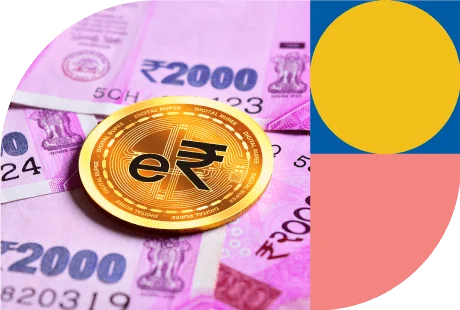
India has achieved numerous successes in the digital sector and is now poised to make another breakthrough with its own digital currency called the Digital Rupee (e₹). This tokenized digital form of the Indian Rupee, which will be released by the Reserve Bank of India (RBI) as a central bank digital currency (CBDC), is founded on the principles of trustworthiness, security, liquidity, and reliability. It seeks to provide an extra choice compared to the currency forms that are currently available.
On the first of December, the Reserve Bank of India launched its Central Bank Digital Currency (CBDC) pilot project with an introduction of the 'Retail Digital Rupee (e₹-R) in four cities: Mumbai, New Delhi, Bengaluru and Bhubaneswar. The project is being conducted with a closed user group, which includes customers, merchants, and four banks - State Bank of India, ICICI Bank, Yes Bank and IDFC First Bank - that are being monitored and regulated in order to evaluate the impact of the project.
As a part of this pilot project, the central bank of India has introduced two types of digital rupee in India, namely retail or general purpose and wholesale. Financial institutions primarily use Digital Rupee-Wholesale (e₹-W), while consumers and businesses use Digital Rupee-Retail (e₹-R) in the same way that physical currency is usually utilised.

Millions of people in India have taken a keen interest in both cryptocurrencies and central bank digital currencies (CBDCs). Despite the fact that both are considered digital assets, there are certain differences between the two that are worth noting.
The arrival of Central Bank Digital Currencies (CBDCs) for both wholesale and retail use has generated a lot of excitement within the country. Just like UPI, the public is eager to experience this technology on a day-to-day basis. What remains to be seen, however, is what sets the digital rupee apart from UPI?
The Central Bank of India's newly proposed Digital Rupee has the potential to revolutionize the safety and security of online transactions. Here are some of the key benefits of using this digital currency.
With any opportunity, there are certain risks that come along with it. Here is a list of some of the potential drawbacks that must be taken into consideration:
The worldwide trend of moving towards a cashless or digital currency system has gained traction in recent times. Several countries, including India, have either implemented or are looking into the possibility of introducing digital currency.
The United Arab Emirates, Ghana, South Africa, Malaysia, Singapore, and Thailand are a few nations that have already launched trials of digital currency.
The digital rupee is already making headway and has been adopted by individuals and merchants with success. Here’s an incident where Anand Mahindra claimed in a tweet that he heard about the digital rupee, India's electronic currency, at a Reserve Bank of India (RBI) board meeting and immediately used it to buy some fruit from a merchant. Evidently, the digital rupee has already made progress and is being used by people and businesses effectively.
Since the launch of the pilot for the digital rupee, 16,000 customers have conducted 160,000 transactions worth a total of ₹64 lakh.
The e-Rupee, India's debut into the digital currency arena, is likely to be more inclusive, however its success depends on the country's digital infrastructure. While more research needs to be carried out to comprehend the effect it will have on India's financial system, it is evident that this development can enhance monetary policy, reduce transaction costs, improve financial inclusion, and augment transparency as well as security in digital transactions.
In Need of Digital Consultancy?
Get customized digital solutions for that edge in business.
Share Via
Get the perfect answer to your UI problems – access to Digiwagon designers.